7 of 12: Mike Salter, Ceasar Alvarez, Nathan Goltry, Alex Bromley, Derek McCraken, Dale Holthaus, Mike Congdon This past weekend was the IHGF Stones of Strength. Promoted by Highland Games veteran Francis Brebner, the contest took classic strongman events and gave them a strict stone theme: Natural Stone Press - 250lbs Stone Carry Medley – 5 natural and atlas stones, ranging from 180-250lbs for 50' each Atlas Stone for Reps – 330lbs to 56” Hussafel Stone – 350lbs natural stone Stone Put – 22lbs natural stone Atlas Stone Series – 280-400lbs to 40” barrells The event was ran in conjunction with the Women's IHGF Strength Games; an event that utilized more classic strongman events. Circus dumbbell medley, Carry Medley, Car Deadlift, Stone Put, Keg Toss, Stone Series Emily Elliott (left) and Liefa Ingalls (2nd from right) preparing for the IHGF Women's Strength Games.
0 Comments
In a previous article (A Case for Quads), I wrote about the relationship between single-joint muscles (quads, glutes) and their antagonist counterparts that cross two joints (hamstrings, rectus femoris, calves). In movements where the two-joint muscles lengthen at one end and shorten at the other (like the hamstrings during a squat), the muscle does not contract fully, but rather maintains a similar length throughout the entire movement. If we use a thought model that replaces two-joint muscles with rigid strings, we find that as the single joint muscle contracts to extend its joint (say, quads extending the knee), slack gets taken out of the antagonist two-joint 'string' (calves in the example below) and causes extension at the opposite joint (ankle). The spring (quadriceps) actively shortens, causing the knee to extend. This causes slack to be taken out of the string (calves), causing plantar flexion. How to Romanian Deadlift CorrectlyThe deadlift is a great movement for brute strength, whether your focus is on building or testing. When trained long enough, however, it can be all but guaranteed that progress will plateau in the face of developing weaknesses. It is vital to intelligently rotate main deadlift variations and accessory exercises over time in order to maintain a well rounded base and stay injury free.
One of the most valuable (and under-used) deadlift supplementary exercises is the Romanian deadlift. By prioritizing posture and hip extension, the Romanian Deadlift (or RDL) is able to condition rock solid spinal positioning under a load, develop superior hip mobility, and emphasize development of the glutes and hamstrings (all common weaknesses in the intermediate deadlifter). With roots leading back to Olympic Weightlifting, the Romanian deadlift offered many of the same benefits of conventional deadlifting without the consistent use of heavy loads. Whether you suffer from cat-back syndrome at the start of the pull or have hamstrings that are too tight to get to the bar effectively, the Romanian deadlift will build suppleness and stability unseen by any other power movement. The bench press isn't just a staple upper body developer. It's America's favorite lift and it has driven droves of aspiring meatheads to migrate to the gym every Monday afternoon for the better part of a century. With the common use of the bench press in high school weight lifting programs and beginner bodybuilding regimens, a trend of shoulder injuries followed. The most common interaction with any former high school athlete/big-man-on-campus goes something like this: “Yeah, I used to be pretty big, but I messed my rotator cuff up benching.”
Injuries on the bench press involves two unique factors: a.) the stability created by the bench which allows for the heaviest loads to be moved and b.) the instability of the shoulder joint which must maintain proper position through the use of numerous small stabilizing muscles. Basically, when high forces are expressed on a vulnerable joint, disaster can strike. Here is a comprehensive list of the best preventative measures you can take to keep your shoulders healthy without putting training on the back burner. The barbell back squat is one of the most complete exercises to be used in any training program. It uses virtually every large muscle between the ankles and forehead and can be used to condition pain tolerance just as well as it can condition strength and endurance. However, making a few small tweaks to the the "King of All Exercises" can dramatically vary the training effect, which is important for catering to the specific needs of different athletes and lifters. Here is a short list of the best squat variations to keep your numbers out of a rut.
What is TrainingTraining is a word that gets substituted regularly for words like 'workout' and 'exercise'. It's important to begin this discussion by identifying a key difference between training and working out. They both imply physical activity, but training has a direct connotation of preparing for some type of contest or sporting activity. It is the competitive context that makes training a more serious description, just like we would identify a fighter's preparation for a boxing match different than that of a cardio kickboxing class.
You don't have to be in direct preparation for a meet, but at the bare minimum, training must be centered and focused on a particular goal and not be subject to whatever you feel like doing that day. Moods and motivation will change, but training should remain constant. Any serious weight training program will include: 1.) Consistent Record Keeping – Even if every workout isn't planned to the 't' ahead of time, every workout should be recorded along with some brief notes about how you felt and how difficult the sets were. This is a valuable tool for future workouts, so that you can reproduce what you did right and avoid what you did wrong Periodization is the organization of work into strength training phases in order for performance to peak at a specific contest. All sports can follow a periodization model, emphasizing broader goals in the off-season and goals more specific to the sport pre-contest. For strength training, these phases will prioritize different movements, volumes, and training frequencies, culminating with a peak of contest specific performance at the end. Simply put, periodization of strength training refers to the calculated changes in a program over time in pursuit of a specific competitive goal.
Most linear periodization programs are broken into pieces called Macrocycles, Mesocycles, and Microcycles. What is a Microcycle? - Think of one training week. A microcycle is the smallest organizational unit of a periodization program next to the individual workout itself. One microcycle will run through all body parts and primary exercises being trained. What is a Mesocycle? - A mesocycle refers to a block of microcycles (training weeks), usually emphasizing the development of a single trait, such as size or power, before switching to another in the next mesocycle. Typically a few weeks to a few months, this is one of the strength training phases that makes up a full periodization program. What is a Macrocycle? - A macrocycle is the accumulation of all mesocycles together to form a full training cycle. It can be thought of as the completion of all strength training phases, hypertrophy, strength, and power. Anywhere from 4 months to a year, The end of the macrocycle should peak with a contest performance before being started again from the top. Much of the history of physical fitness involved the utilization of long slow distance training(LSD) as the keystone of performance. Want to drop a weight class or outlast an opponent? Then you better put on your running shoes, hit the road, and don't come back for at least an hour. 10 mile runs were the norm, from runners, to wrestlers, to football and soccer players.
The term 'accessory' to describe standard bodybuilding movements began being used in the field of strength sports. The implication of the term is that developing a main competitive lift, such as the squat, is the main focus and that all other work is done to build up weak points that may hinder progress in the main movement or lead to injury. The concept of accessory doesn't apply to, say, a bodybuilder because the entire work week is already spent picking apart muscles in the body and training them independantly of others. To a bodybuilder, compound movements still provide the backbone of a solid mass routine, but they do not get any higher priority than the isolation work that comprises much of the workout.
Accessory work, or as the rest of the fitness world calls it, 'working out', is essential for building a large and physically capable body. The point of the whole thing is to isolate individual areas, be they muscle groups or entire energy systems, keeping up odds and ends that will be left behind otherwise. It stands to reason that a max effort lift will fail based on the weakest link, and if every link is given equal attention, then the chances of a weakness developing is minimal. Special consideration should be taken when planning lifting blocks to prioritize which areas are holding back progress the most. That being said.... Here are the 5 reasons for choosing accessory work: The anterior pelivc tilt is one of the more common dysfunctional movement patterns that plague lifters. It's characterized by the ribs being flared, the abdominals staying soft and protruded, the butt sticking out, and the lower back overarched. Imagine your hips are a bucket of water. Now imagine the bucket is tilted forward, spilling all over the front of your legs. This is an anterior pelvic tilt. The problems with this bad positioning are many. Close up, they cause a number of specific problems at the site: overarching the lower back under a load (like squatting and deadlifting) is a recipe for disc issues down the road, especially as the weight on the bar continues to climb. The abdominals are lax, making bracing and proper breathing during heavy sets impossible. This can contribute to lower back pain during squats. The glutes and hamstrings are prestretched, hindering proper setup in a squat or deadlift and limiting their force production. And the hip flexors..... those horrible hip flexors stay short and tight, working excessively against the glutes and hamstrings and limiting full hip extension (and power) at the top of any heavy hip extension like running or jumping. The anterior tilt of the pelvis over-arches the lower back, elongating the glutes and hamstrings.
|
Archives |
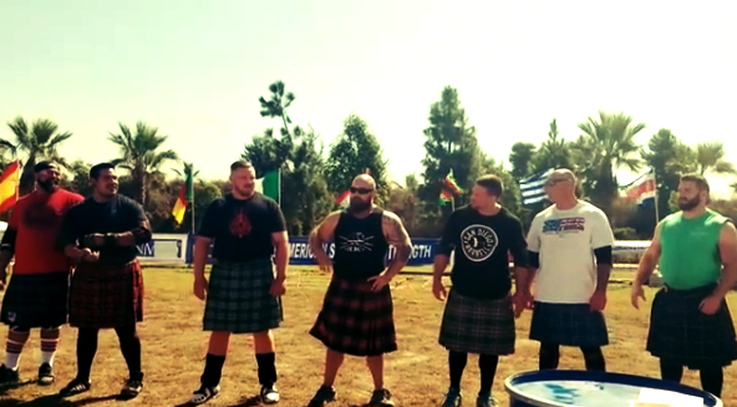
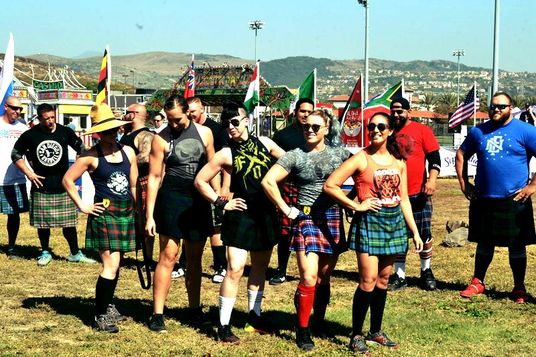
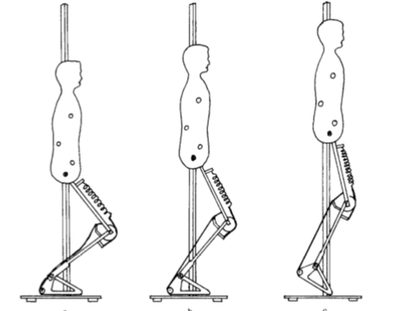
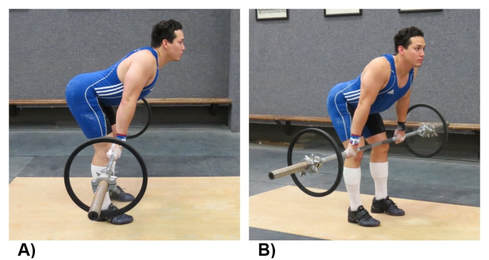
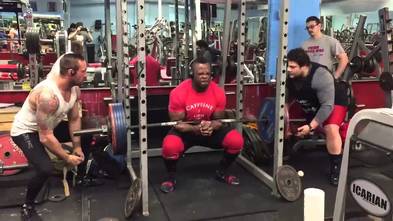
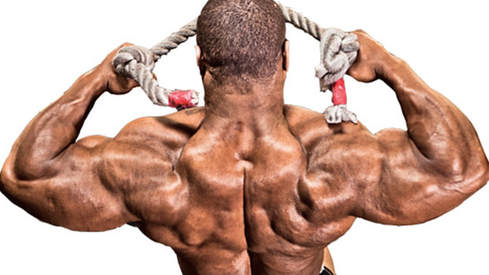
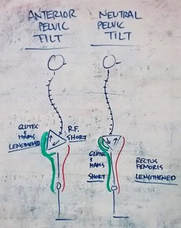
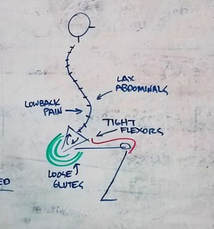

 RSS Feed
RSS Feed
